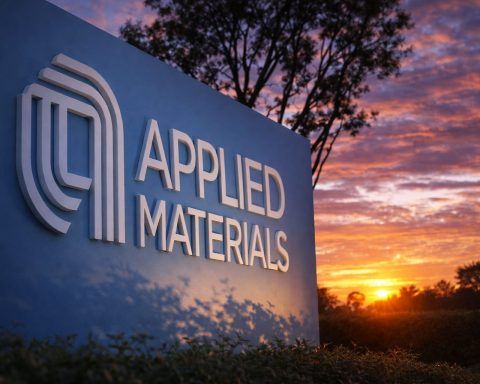- SpaceX’s Falcon 9 launched NASA’s TRACERS mission from Vandenberg Space Force Base on July 23 at 2:13 p.m. EDT.
- The Falcon 9 first stage was on its 16th flight and performed a pinpoint landing at Vandenberg, marking SpaceX’s 479th booster recovery.
- TRACERS, Tandem Reconnection and Cusp Electrodynamics Reconnaissance Satellites, consists of two 200-kg satellites to study magnetic reconnection in Earth’s magnetosphere.
- Five small rideshare satellites accompanied TRACERS carrying experiments such as next-generation communication terminals and Earth radiation budget sensors.
- In the U.S., House appropriators on July 23 directed NASA to study alternatives to the SLS’s planned Exploration Upper Stage for Artemis 4, signaling cost-sustainability concerns.
- Senegal became the 56th Artemis Accords signatory on July 24 in Washington, reinforcing international cooperation and data sharing in lunar exploration.
- China issued a CNSA directive on July 22 tightening licensing, testing, and supplier oversight for private space firms, as it projects a 2.5 trillion yuan ($348 billion) commercial space market by 2025.
- Innovative Rocket Technologies (iRocket) announced a $400 million SPAC merger with BPGC Acquisition Corp. to go public on Nasdaq by late 2025, targeting the LNG-fueled Shockwave reusable launcher.
- L98-59f, a temperate super-Earth in the L98-59 system 34.5 light-years away, is at least 2.8 Earth masses and orbits its star every about 23 days.
- TOI-2431 b is an Earth-sized exoplanet with a 5.4-hour orbital period, about 0.006 AU from its star (roughly 933,000 km), 1.5 R⊕, 6.2 M⊕, a surface around 1,727°C, and more than 1,600 orbits per year, making it a prime JWST target.
In the past 48 hours, the space sector has seen a flurry of activity – from a Falcon 9 roaring to orbit with science satellites to policymakers charting new courses for exploration. Major space agencies and private firms notched successes, announced plans, and even spotted extreme new worlds. Here’s your comprehensive roundup of the latest satellite launches, mission milestones, commercial ventures, astronomical discoveries, and policy moves from July 23–24, 2025.
SpaceX Soars with NASA’s TRACERS Space-Weather Mission
Vandenberg Space Force Base, California (July 23) – SpaceX’s Falcon 9 rocket successfully launched NASA’s TRACERS mission, deploying twin satellites that will probe how the Sun’s solar wind interacts with Earth’s magnetic field Spaceflightnow. Liftoff came at 2:13 p.m. EDT after a one-day delay caused by a regional FAA power outage that halted the initial attempt Spaceflightnow. In a testament to reusable rocketry, the Falcon 9’s first-stage booster (on its 16th flight) returned for a pinpoint landing at Vandenberg, marking SpaceX’s 479th booster recovery Spaceflightnow. Riding along with the TRACERS pair were five small rideshare satellites carrying experiments ranging from next-gen communication terminals to sensors studying Earth’s radiation budget Spaceflightnow Spaceflightnow.
The TRACERS project – short for Tandem Reconnection and Cusp Electrodynamics Reconnaissance Satellites – aims to unravel the mechanics of “magnetic reconnection” in Earth’s magnetosphere, the process that triggers auroras but can also disrupt satellites and power grids Spaceflightnow. “What we will learn from TRACERS is critical for understanding – and eventually predicting – how energy from our Sun impacts the Earth and our space and ground-based assets,” said Joseph Westlake, director of NASA’s heliophysics division, emphasizing that better insight into space weather will help “keep our way of life safe here on Earth” Spaceflightnow. The two 200‑kg TRACERS spacecraft will orbit in tandem through Earth’s polar magnetic cusps (regions where our magnetic field funnels solar particles), collecting data to improve forecasts of geomagnetic storms. This science mission, accomplished via a commercial launch provider, underlines the growing synergy between NASA’s research goals and SpaceX’s high-cadence launch capabilities Spaceflightnow Spaceflightnow.
U.S. Lawmakers Question Costly SLS Upgrade
Las Vegas, NV (July 23) – On the policy front, U.S. congressional appropriators are casting doubt on NASA’s plans to upgrade its Space Launch System (SLS) Moon rocket. In a House budget bill, lawmakers directed NASA to examine alternatives to the SLS’s proposed Exploration Upper Stage (EUS) – an enhanced second stage intended for use starting with the Artemis 4 mission Copernical. The House committee’s report notes the uncertain long-term future of SLS and suggests NASA assess other options, potentially including commercial heavy-lift rockets, before committing further to the new upper stage Copernical. This scrutiny comes amid broader debates in Washington over Artemis program costs. While SLS has flown successfully for Artemis I, its expensive upgrades face skepticism, and Congress appears keen to ensure NASA invests in sustainable, cost-effective architectures for deep space exploration.
Senegal Joins Artemis Accords Alliance
Washington, D.C. (July 24) – The international coalition for peaceful lunar exploration continues to grow. Senegal became the 56th country to sign the Artemis Accords – the U.S.-led framework outlining principles for responsible exploration of the Moon, Mars, and beyond Nasa. Officials from Senegal’s space agency joined NASA leaders at a ceremony in Washington to formalize the commitment. The Artemis Accords set guidelines on topics like transparency, interoperability, resource use and avoiding harmful interference, echoing the Outer Space Treaty but with added detail for the coming era of lunar missions Nasa. By signing on, Senegal signals its intent to participate in the emerging lunar economy and to uphold norms like open sharing of scientific data. NASA Chief of Staff Brian Hughes, hosting the event, noted that the Accords’ growing list of signatories – from major spacefaring nations to emerging players – demonstrates global enthusiasm for cooperation in deep space Nasa. With Senegal’s accession, the Accords gain further momentum in Africa, following Nigeria, Rwanda, and others who joined earlier, as NASA pushes to make the Artemis program an international effort.
China Tightens Grip on Commercial Launch Sector
Beijing (July 23) – China’s government this week implemented new rules to heighten quality oversight of its booming commercial space industry. The China National Space Administration (CNSA) issued a directive on July 22 aimed at enforcing stricter standards and supervision across all phases of private space projects People. The guidelines detail management requirements from spacecraft design and manufacturing to launch operations, in-orbit service, and end-of-life disposal People. By explicitly delineating responsibilities for commercial launch firms and satellite makers, officials hope to foster “orderly development” of the sector People.
The move comes as China’s space startups dramatically increase the country’s launch cadence, supported by government policy calling the commercial space sector a “new engine of economic growth.” In fact, China projects its commercial space market will exceed 2.5 trillion yuan (≈$348 billion) by 2025 People. Recent high-profile launch failures by Chinese startups may have prompted regulators to act on quality control. The new measures, which include more rigorous licensing, testing, and supplier oversight, should improve reliability as companies develop rockets and megaconstellations. By tightening standards now, China is signaling that even as it embraces private-sector innovation, it wants to ensure these ambitious ventures don’t cut corners on safety or jeopardize the country’s national space goals.
Reusable Rocket Startup iRocket Going Public in $400 M Deal
Los Angeles, CA (July 23) – In the commercial spaceflight arena, Innovative Rocket Technologies (iRocket) announced plans to go public through a $400 million SPAC merger. The New York-based launch startup – which is developing fully reusable rockets – will merge with BPGC Acquisition Corp., a blank-check company backed by former U.S. Commerce Secretary Wilbur Ross, in a deal slated to close by late 2025 Reuters Reuters. The transaction will infuse iRocket with capital as it refines its LNG-fueled Shockwave launch vehicle, designed for rapid turnaround and aimed at the small satellite market. The move to merge via a special-purpose acquisition company reverses a slowdown in SPAC deals since the 2020–21 boom, indicating renewed investor appetite for space startups this year Reuters.
iRocket, founded in 2018, is pursuing a two-stage booster that can fly, land, and fly again on short notice – a capability already demonstrated by SpaceX and now highly sought after by satellite operators. “iRocket’s unique combination of proven engineering talent, reusable launch systems, and solid rocket motor capability positions the company to capture a significant share of the global launch market,” said Wilbur Ross, who will join the board of the merged entity Reuters. The public listing on Nasdaq will make iRocket one of the few publicly traded pure-play rocket builders. It also underscores the confidence of investors (and veteran industry figures like Ross) in iRocket’s approach to slashing launch costs. If the company’s technology pans out, it could provide more competition in the reusable launch sector – and more options for sending up the ever-growing fleets of small satellites.
New Worlds Unveiled: Habitable-Zone Super-Earth and a 5-Hour Year
While engineers launch new hardware, astronomers continue to launch new discoveries. Over the past two days, scientists announced intriguing findings about exoplanets – including one nearby world that might be hospitable to life, and another on a hellishly fast orbit:
- Temperate Super-Earth in the Neighborhood: An international team confirmed the existence of a fifth planet in the L 98-59 planetary system, a diminutive red-dwarf star just 34.5 light-years away. The newly detected world, L 98-59f, is a non-transiting super-Earth at least 2.8 times the mass of Earth, orbiting in about 23 days – squarely within the star’s habitable zone where liquid water could potentially exist Sci Sci. This discovery, made by combining data from NASA’s TESS exoplanet telescope and precision spectrographs (ESPRESSO and HARPS) on Earth, paints the L 98-59 system as one of the richest known around a small star. “Finding a temperate planet in such a compact system makes this discovery particularly exciting,” said Dr. Charles Cadieux of the University of Montreal, emphasizing that it “highlights the remarkable diversity of exoplanetary systems” and provides a prime target for future atmospheric studies with the James Webb Space Telescope Sci. With L 98-59f, the system now hosts at least five worlds – from scorchingly close mini-planets to this new, more clement super-Earth – offering a laboratory for studying how planets form and evolve around M-type stars Sci Sci.
- Planet with a 5.4-Hour Year: In a find that stretches the definition of an “Earth-like” planet, astronomers revealed TOI-2431 b, an Earth-sized exoplanet that whips around its host star in just 5.4 hours Universetoday. This ultra-short-period planet, spotted by NASA’s TESS and confirmed with ground-based telescopes, sits extremely close to its star (~0.006 AU, or only ~933,000 km away) Universetoday. A year on TOI-2431 b is literally over before a coffee break – the planet completes more than 1,600 orbits in the time Earth takes to do one Universetoday. Unsurprisingly, conditions on this world are infernal: its surface temperature is estimated around 1,727 °C (2,000 K), hot enough to melt most metals, and astronomers suspect the planet’s surface is an ocean of molten rock Universetoday. TOI-2431 b appears to be a rocky planet about 1.5 times Earth’s radius and 6.2 times Earth’s mass, making it extremely dense and likely rich in iron Universetoday. It’s so close-in that tidal forces have probably distorted it into an oblong, non-spherical shape and are steadily dragging it inward to an eventual doom by disintegration Universetoday. Though hostile to life, this world adds to the catalog of extremes and will help scientists test theories of how planets behave under intense stellar gravitational pull. Researchers say TOI-2431 b would be an excellent target for JWST to observe before it spirals into its star, as the telescope could analyze what metals and minerals are vaporizing from the planet’s super-heated surface Universetoday Universetoday.
From promising habitable-zone worlds to extreme “lava planets,” these revelations demonstrate the incredible variety of planets in our galaxy. As Dr. Cadieux noted, each new find – whether potentially life-friendly or decidedly not – helps astronomers build a more complete understanding of how planetary systems form and evolve Sci Sci. And with next-generation observatories, scientists are poised to probe these distant worlds in greater detail, inching closer to answering the age-old question of how common (or rare) truly Earth-like planets are.
Sources: Spaceflight Now Spaceflightnow Spaceflightnow Spaceflightnow; Reuters Reuters Reuters; NASA (Press Release) Nasa; People’s Daily (Xinhua) People People; Sci.News Sci Sci Sci; Universe Today Universetoday Universetoday.




